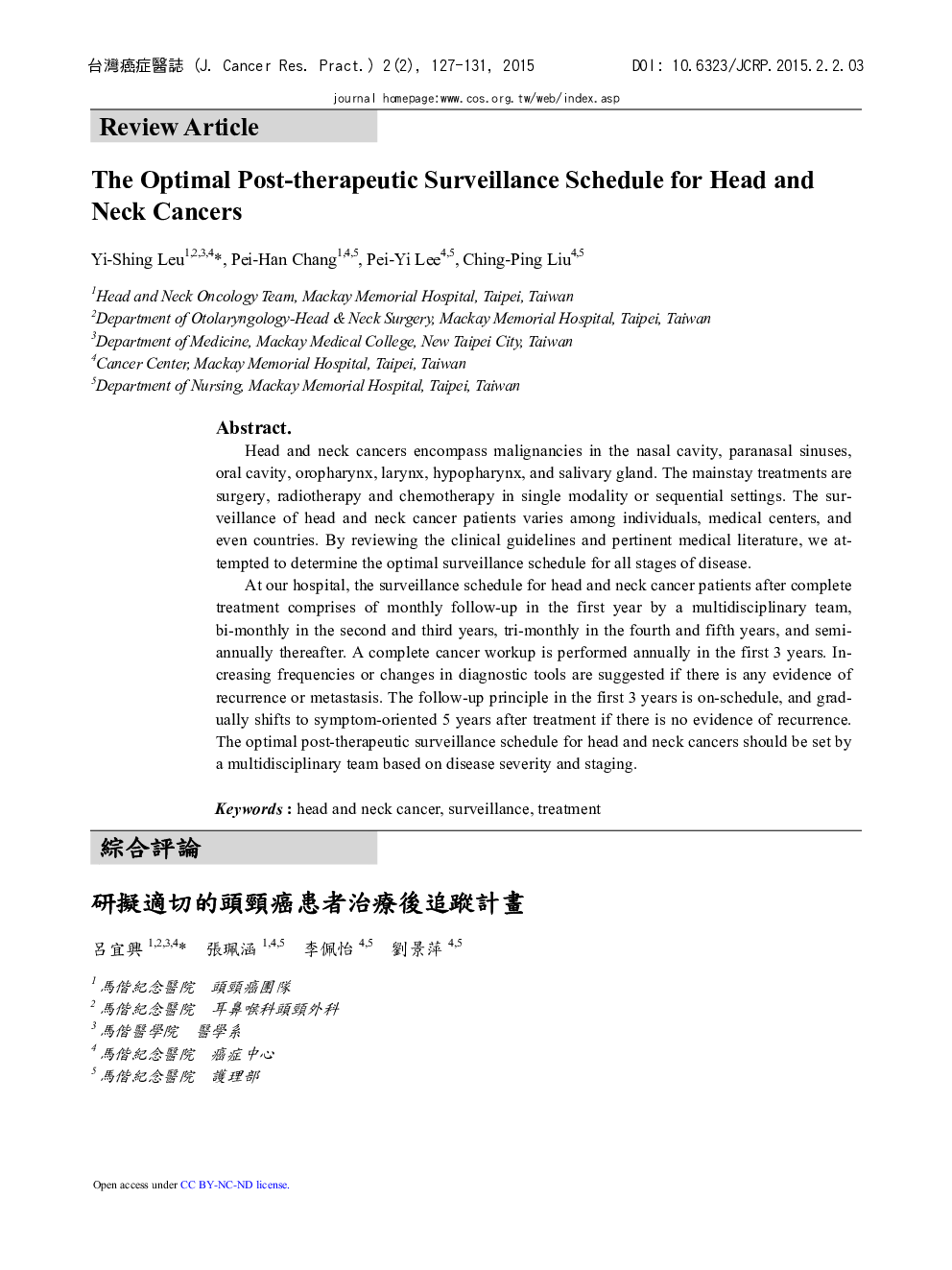| Article ID | Journal | Published Year | Pages | File Type |
|---|---|---|---|---|
| 3988863 | Journal of Cancer Research and Practice | 2015 | 5 Pages |
Head and neck cancers encompass malignancies in the nasal cavity, paranasal sinuses, oral cavity, oropharynx, larynx, hypopharynx, and salivary gland. The mainstay treatments are surgery, radiotherapy and chemotherapy in single modality or sequential settings. The surveillance of head and neck cancer patients varies among individuals, medical centers, and even countries. By reviewing the clinical guidelines and pertinent medical literature, we attempted to determine the optimal surveillance schedule for all stages of disease.At our hospital, the surveillance schedule for head and neck cancer patients after complete treatment comprises of monthly follow-up in the first year by a multidisciplinary team, bi-monthly in the second and third years, tri-monthly in the fourth and fifth years, and semiannually thereafter. A complete cancer workup is performed annually in the first 3 years. Increasing frequencies or changes in diagnostic tools are suggested if there is any evidence of recurrence or metastasis. The follow-up principle in the first 3 years is on-schedule, and gradually shifts to symptom-oriented 5 years after treatment if there is no evidence of recurrence. The optimal post-therapeutic surveillance schedule for head and neck cancers should be set by a multidisciplinary team based on disease severity and staging.
